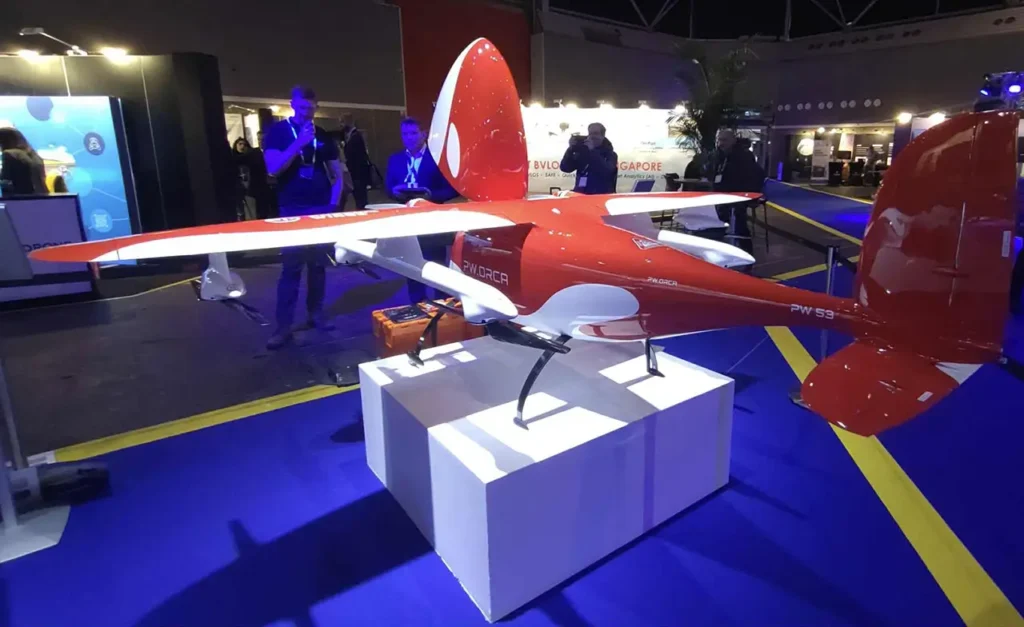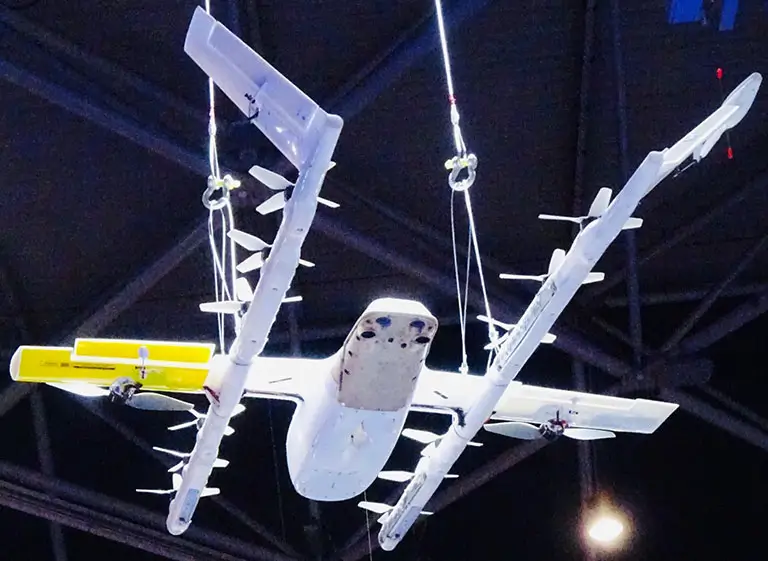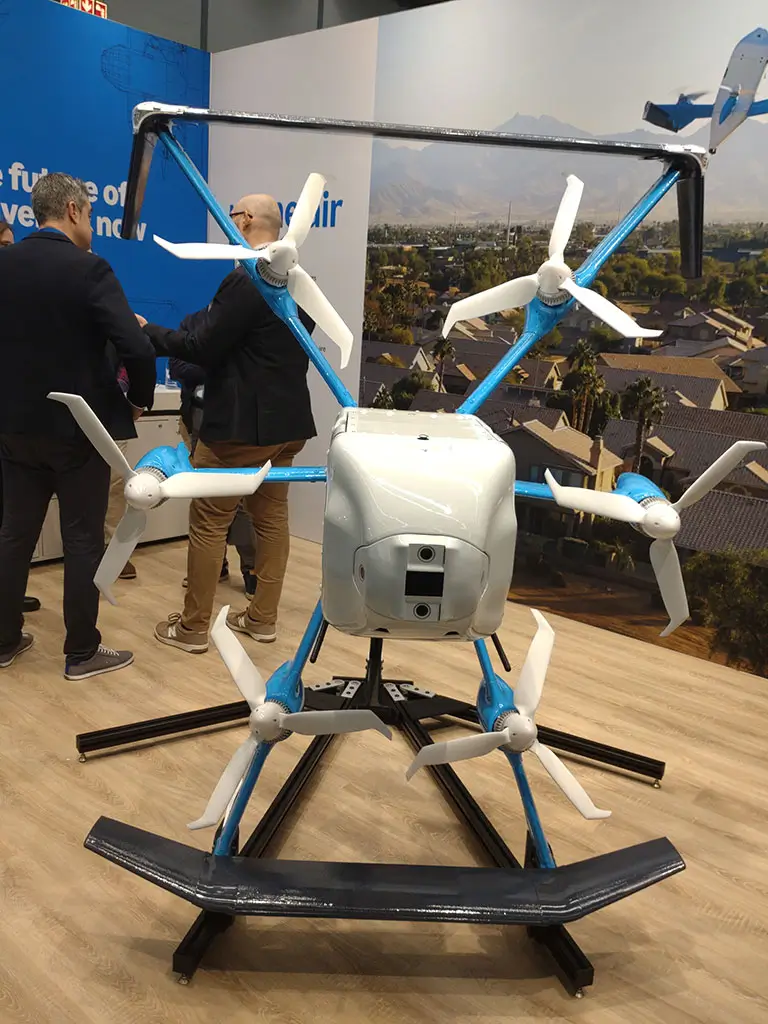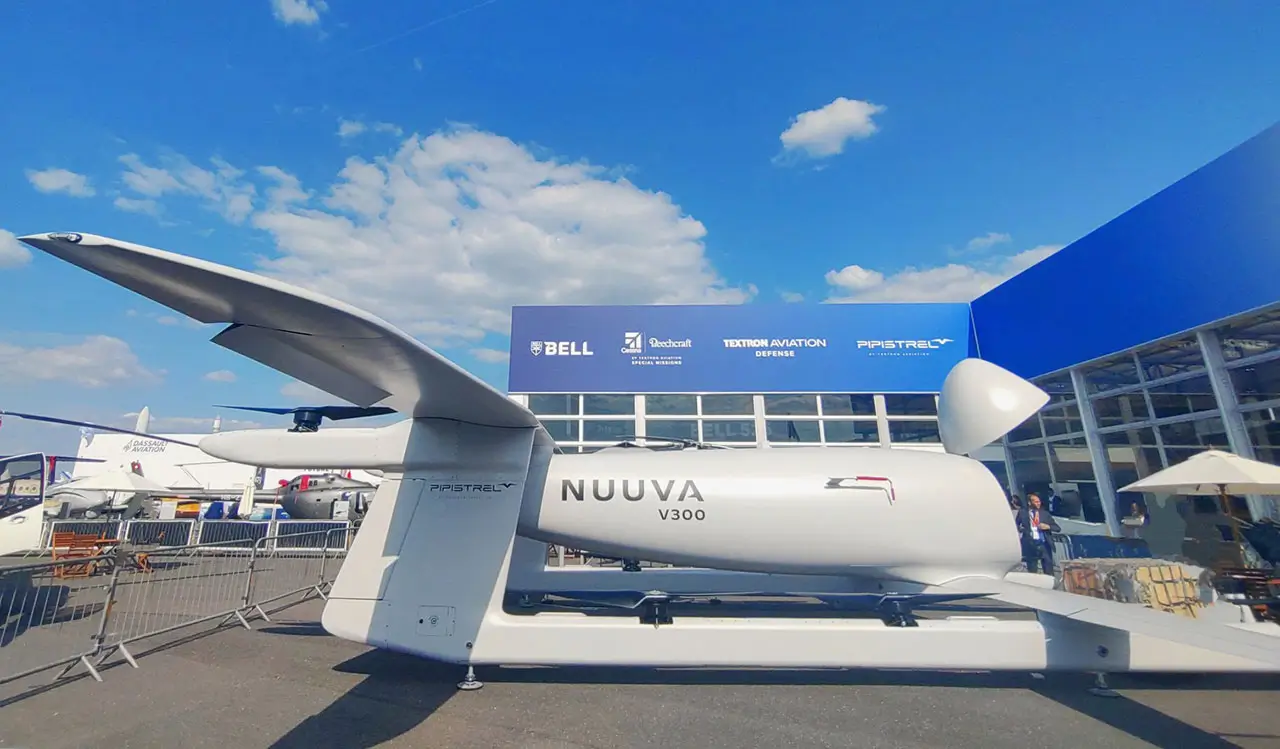By: Joanna Wieczorek, AG Europe Ambassador and Yves Morier
Drone deliveries continue to quietly transform logistics and supply chains throughout the European Union (EU). From industrial ports to healthcare facilities and humanitarian missions, drones have become an essential tool for faster, greener, and more efficient transportation of goods. This article delves deeply into the current drone delivery landscape in Europe, highlighting key players, innovative applications, and the regulatory frameworks that ensure safety and scalability. It also explores the challenges and future prospects for drone logistics across the continent.
The New Frontier: Drone Deliveries Taking Off in Europe
As the skies above Europe become increasingly active with the hum of unmanned aerial vehicles (UAVs), the continent stands at the threshold of a logistics sea change. European industry, commerce, and public services increasingly integrate drone deliveries into their very fabric. UAVs have not only streamlined the movement of goods but also set new standards for speed, sustainability, and efficiency. From industrial giants to local startups, organizations across Europe have harnessed drone technology to solve complex logistical challenges, reduce environmental impact, and enhance operational safety.

Industrial Innovation: Drones in Port Logistics
One of the most promising arenas for drone deliveries in Europe is the industrial sector, particularly in major ports. At the continent’s bustling ports, drones have redefined the art and science of industrial logistics. The Port of Antwerp offers a compelling example, where ADLC (A Drone Logistics Company) operates drones to transport petrochemical samples. This operation is designed to be fast, integrated, and low-emission. ADLC’s transport management system is drone-agnostic, but currently utilizes Phoenix Wings ORCA drones, and manages fleet maintenance alongside a quasi-U-space traffic management system. These drones operate beyond visual line of sight (BVLOS), a key capability for complex environments like ports.
Ports such as Hamburg and Rotterdam are also exploring similar drone operations, which further confirms that these controlled, industrial environments are ideal for drone logistics. The ability to move samples or small cargo quickly across sprawling port facilities reduces turnaround times and emissions compared to traditional vehicle transport.
Cargo Airlines in the Sky: Dronamics’ Ambitious Vision
Dronamics, a Bulgarian startup, is pioneering the concept of a drone cargo airline, registered with IATA and ICAO. Their flagship drone, the Black Swan, can carry payloads up to 350 kilograms over distances as far as 2,500 kilometers. This range allows Dronamics to target not just last-mile deliveries but the broader challenge of connecting less accessible regions to major logistics hubs.
The company plans to establish a network of “droneports” across Europe, starting with Greece and Bulgaria, then expanding to Italy, Spain, the UK, and beyond. These droneports require a 400-meter strip for takeoff and landing, enabling same-day deliveries across a vast geographic area. With 42 droneport locations in 14 countries already planned or operational, Dronamics continues to scale its network.
The company has secured a Light Unmanned Aircraft Operator Certificate (LUC) from Malta’s Civil Aviation Authority and EU funding to accelerate development. Their drones run on standard and biofuels, with ambitions to develop hydrogen-powered versions, which reflects the company’s commitment to sustainability.

Medical Deliveries: Helicus and Wing Leading Healthcare Logistics
The critical healthcare logistics sector also benefits from drone technology. Helicus, founded by healthcare professionals, has been conducting experimental drone flights between hospitals as part of the SESAR SAFIR-Ready project. Their Command-and-Control Center (C2C) manages these operations to ensure safety and efficiency. Helicus holds a Light UAS Operator Certificate from Belgian authorities and collaborates internationally, including with Japan’s Drone Association JUIDA.
Wing, a subsidiary of Alphabet, has expanded its drone delivery services beyond the United States and Australia to Europe, including Finland, Ireland, and more recently, London. Wing’s drones have completed over 450,000 operations across three continents, with the fastest delivery under three minutes. Their highly automated BVLOS flights operate below 120 meters altitude and maintain safe distances from obstacles and other air traffic. Wing recently began medical deliveries between two London hospitals to demonstrate the potential for drones to support critical healthcare supply chains.
Consumer Deliveries: Manna and Amazon Testing the Skies
Consumer-focused drone deliveries seem to have gained traction, especially in suburban and rural areas. Manna has conducted over 165,000 flights in Ireland, delivering food and other goods efficiently. Amazon, although still in the testing phase in Italy, signals growing interest from e-commerce giants in drone delivery as a way to enhance customer experience and reduce delivery times.
These services face unique challenges in urban areas, such as limited landing zones and safety concerns, but suburban and rural regions present fewer obstacles and greater opportunities for rapid adoption.
Humanitarian Aid: Wings for Aid Reaching Remote Communities
Drone technology has also proven invaluable in humanitarian contexts. Wings for Aid, a Dutch initiative, uses a modified Pipistrel microlight as a drone capable of carrying 160 kilograms over 250 kilometers. Their payloads are delivered in specially designed boxes that absorb impact, allowing safe drops in inaccessible or disaster-affected areas.
Operations in the Dominican Republic and Madagascar have demonstrated the effectiveness of this approach, with plans to expand to Kenya. These missions highlight drones’ ability to deliver essential supplies quickly where traditional logistics struggle.
Navigating the Skies: Regulatory Frameworks Guiding Drone Deliveries in the EU
The rapid expansion of drone deliveries across Europe has brought not only technological innovation but also the critical need for comprehensive oversight. As drones take on more complex roles—from transporting medical supplies in urban centers to delivering industrial goods across borders —the importance of a clear, harmonized regulatory framework becomes paramount.
Ensuring the safety of people on the ground and in the air, while enabling industry growth and cross-border operations, requires regulations that are both robust and adaptable. The European Union has responded with a set of rules designed to address the unique challenges and risks associated with drone logistics, balancing the drive for innovation with the necessity of public safety and operational consistency. At the heart of this framework is the “specific category,” a regulatory approach tailored to the higher-risk and more advanced drone operations that are powering the next generation of aerial deliveries.
Understanding EU Drone Regulations: The Specific Category
Drone deliveries in Europe are governed primarily by EU Regulation 2019/947, which categorizes drone operations into open, specific, and certified categories based on risk. Most delivery operations fall within the specific category, which bridges simple, low-risk flights and complex, high-risk certified operations.
Operators must obtain authorization from their National Aviation Authority (NAA), supported by a thorough risk assessment addressing ground risk (to people and property), air risk (to other airspace users), and containment risk (preventing drones from straying beyond controlled areas).
The SORA Methodology: A Common Language for Risk Assessment
The European Union Aviation Safety Agency (EASA) endorses the Specific Operations Risk Assessment (SORA) methodology, developed by the Joint Authorities for Rulemaking of Unmanned Systems (JARUS). SORA standardizes how operators assess and mitigate risks, facilitating regulatory approvals and cross-border operations.
SORA assigns a Specific Assurance and Integrity Level (SAIL) from I (lowest risk) to VI (highest risk). Each SAIL level corresponds to a set of Operational Safety Objectives (OSOs) that operators must meet, which cover drone design, maintenance, operational procedures, personnel training, and environmental considerations.
EASA is actively updating SORA, moving from version 2.0 to 2.5, which will introduce quantitative ground risk assessments. JARUS is developing version 3.0 to better address air risk and highly automated or high-altitude operations.
Challenges and Opportunities in Regulation
Despite a well-structured regulatory framework, drone deliveries in Europe have not yet reached their full potential. Experts suggest expanding regulatory sandboxes and increasing the number of test centers to gather operational data and refine regulations. Other priorities include improving the conspicuity of general aviation aircraft, updating the Standardized European Rules of the Air to better integrate unmanned systems, widespread access to up-to-date, machine-readable data on drone operations and accelerating the development of industry safety standards—especially for detect-and-avoid (DAA) systems—are critical steps to unlocking broader adoption.

The Impact of Drone Deliveries: Efficiency, Sustainability, and Accessibility
As drone deliveries become more integrated into Europe’s logistics networks, their impact extends far beyond faster shipping times and improved convenience. Drones are fundamentally changing how goods move, offering tangible benefits for businesses, consumers, and the environment. By shifting deliveries from traditional vehicles to drones, companies are not only optimizing efficiency but also contributing to broader sustainability goals. The intersection of technology and logistics creates new opportunities to reduce operational emissions, ease congestion, and make essential goods more accessible to communities across the continent. This shift is especially evident in the environmental advantages that drone deliveries bring to the table.
Environmental Benefits: Reducing Emissions and Congestion
Drones offer a greener alternative to traditional delivery vehicles, particularly for last-mile logistics. By shifting deliveries from fossil fuels trucks and vans to electric or biofuel-powered drones, companies can reduce carbon emissions and alleviate road congestion. The co-development of electric trucks and vans together with electric cargo bikes may reduce the future environmental benefit as the congestion issue may remain.
Supply chain optimization models show that incorporating drones into delivery networks can significantly cut costs and environmental impact. Incentives from national institutions further encourage companies to adopt drone deliveries, which aligns with Europe’s broader sustainability goals.
Bridging the Accessibility Gap: Serving Remote and Underserved Areas
Many rural and suburban areas in Europe face limited delivery options due to high costs and logistical challenges. Drones are uniquely suited to bridge this gap by providing fast, reliable service where traditional transport struggles.
Initiatives like Dronamics’ droneport network, Wing’s and Helicus’ missions exemplify how drone logistics can democratize access to goods and essential services, from consumer products to medical supplies.
Urban Delivery: Challenges and Gradual Adoption
Urban drone deliveries face hurdles such as safety concerns, limited landing spaces, and complex airspace management. However, companies like Wing and Manna are pioneering solutions, including highly automated flights with strict altitude and obstacle clearance protocols.
The gradual rollout of drone delivery services in less dense urban areas and suburban zones suggests a phased approach, with infrastructure development—such as rooftop landing pads—playing a key role in future expansion.
Future Horizons: What Lies Ahead for Drone Deliveries in Europe
As drone deliveries move from isolated pilot projects to a core part of Europe’s logistics landscape, the focus is shifting toward what the future holds for this evolving sector. The next chapter will be defined by expanding networks, greater operational capabilities, and the seamless integration of drones into the broader transportation ecosystem.
Companies are not only scaling up their fleets and coverage areas, but also investing in new technologies, sustainable fuels, and advanced airspace management systems. These efforts will set the stage for a Europe where same-day, long-distance drone deliveries become commonplace, connecting more people and places than ever before. The expansion of these networks will be crucial in unlocking the full potential of drone logistics and ensuring that the benefits are felt across urban centers, rural communities, and even the most remote regions of the continent.
Expanding Networks and Capabilities
The rapid growth of drone delivery networks, especially cargo airline models like Dronamics, points to a future where drones handle not only last-mile deliveries but also regional and international cargo transport. The establishment of droneports or use of existing aerodromes across Europe will enable seamless, same-day deliveries over long distances.
Technological advancements, including hydrogen-powered drones, improved battery life and hybrid electric propulsion will further extend range and payload capacity, making drone logistics more competitive with traditional air and ground transport.
Another large drone in development in the EU is the Pipistrel NUVAA V300 that can carry a payload of 270 kg, has a range of 550 km and a cruise speed of 220km/h
Enhancing Safety and Security
Research projects like CERTIFLIGHT financed by the European Union Space Program Agency are developing satellite-based tracking systems to securely monitor drone locations, preventing collisions and ensuring legal accountability for deliveries. CERTIFLIGHT had its final meeting in April 2025. CERTIFLIGHT is using a feature of the Galileo GNSS constellation called Open Service – Navigation Message Authentication. It will thus address threats like location spoofing that is essential to guarantee that packages reach their intended recipients safely. These innovations will build public trust and regulatory confidence, paving the way for broader commercial deployment.
Regulatory Evolution and Industry Collaboration
The EU’s regulatory framework will continue to evolve by incorporating lessons from operational experience and technological advances. Increased collaboration between regulators, industry players, and research institutions will be crucial to harmonize standards, improve safety systems, and facilitate cross-border drone operations. Regulatory sandboxes and test centers will provide real-world data to refine policies and accelerate innovation.
Flying High Over EU’s Skies: Delivering The Goods
Drone deliveries in the EU are moving from experimental projects to integral components of Europe’s logistics ecosystem. Across industrial ports, healthcare systems, consumer markets, and humanitarian missions, drones continue proving their value in speed, efficiency, and operational sustainability.
Supported by a robust regulatory framework and driven by pioneering companies like ADLC, Dronamics, Helicus and Wing, drone logistics in the EU appears set to expand. Challenges remain, particularly in urban environments and regulatory harmonization, but the trajectory is clear: the skies above Europe will play an increasingly vital role in moving goods and connecting people. As technology advances and regulations adapt, drone deliveries will unlock new possibilities for commerce, healthcare, and aid—delivering more than just packages, but also innovation and opportunity across the continent.**Yves Morier graduated from the French Civil Aviation Academy as an Air Transport Engineer (MSC) in 1975. After his military service, he joined the French CAA (DGAC) in 1979. He was seconded as Regulation Director to the Joint Aviation Authorities (JAA) in 1993. In 2004, he joined EASA where he occupied several management posts. His last assignment was as Principal Advisor New technologies to the Director of Flight Standards where he contributed to the development of the first EU regulations on drones. He retired in 2019 and since then has remained involved in Drones and Advanced Air Mobility, mainly as a volunteer.
By: Joanna Wieczorek, AG Europe Ambassador and Yves Morier

